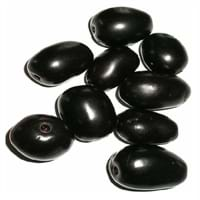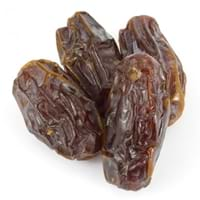Health Benefits
Cancer prevention, Heart care, Increase in haemoglobin, Regulates Blood Sugar, Ulcer prevention
Cancer prevention, Cures gastro-intestinal troubles, Diarrhea treatment, Heart care, Heat stroke treatment, Improves muscular strength, Prevents constipation, Prevents nerve damage, Strengthening of bones
General Benefits
Boosts immune system, Digestive aid, Fights against infections, Strengthens bones
Boosts immune system, Maintains healthy cholesterol level, Strengthens bones
Skin Benefits
Brightens and lightens complexion, Skin cleansing, Skin rejuvenation, Treatment of acne, Treatment of dark spots
Anti-aging benefits, Brightens and lightens complexion, Reduces wrinkles, Treatment of skin diseases
Hair Benefits
Promotes longer and healthier hair, Protects hair
Prevents hair loss, Promotes longer and healthier hair, Protects hair, Regulates hair growth
Allergy Symptoms
Abdominal pains, NA
Redness of eyes, Runny nose, Sneezing, Watery eyes
Side Effects
Decrease in blood sugar levels, Allergic reaction, Throat irritation, Throat swelling, Possibly unsafe during pregnancy
Allergic reaction, Diarrhoea, Intestinal gas, Stomach pain, Tooth decay, Weight gain
Best Time to Eat
As a snack in the late afternoon, Don't consume at night and before bed, Eat the fresh ones, avoid mixing with any other foods, don't eat after meal., Morning time (before lunch), Strictly avoid empty stomach
Any time except an hour after meal, Don't consume at night and before bed
Vitamin B5 (Pantothenic Acid)
Not Available
Vitamin B9 (Folic acid)
Not Available
Vitamin C (Ascorbic Acid)
Vitamin E (Tocopherole)
Not Available
Vitamin K (Phyllochinone)
Not Available
Lutein+Zeaxanthin
Not Available
Phytosterol
Not Available
Calories in Fresh Fruit with Peel
Calories in Fresh Fruit without Peel
Not Available
Not Available
Calories in Frozen Form
Not Available
Not Available
Calories in Dried Form
Not Available
Calories in Canned Form
Not Available
Not Available
Type
Tree fruit, Tropical
Tropical
Season
Monsoon, Summer
Spring, Summer
Varieties
Ram Jarnun and Paras
Barhi, Dayri, Deglet Noor, Halawy, Khadrawy, Medjool, Thoory and Zahidi
Color
Black, Magenta, Purple
Black, Brown, Red, Yellow
Inside Color
Purple
Brown
Taste
Astringent, Sweet
Sweet
Origin
Bangladesh, India, Indonesia, Malaysia, Nepal, Pakistan, Philippines, Sri Lanka
Iraq
Soil Type
Loam, Sandy loam, Well-drained
Clay, Loam, Sand
Climatic Conditions
Humid, Rainfall
Hot, Warm
Facts about
- Wood of jambul tree is water-resistant wood & is used in railroads and to implement engines in the well.
- In Indian mythology, it is said that Jambul fruit was revered by Buddha.
- Jambul has a huge importance in Ayurveda.
- Date is known as the tree of life in Middle east.
- Date palms cover 3% of the earth's total farmlands.
- Scholars believe that date (and not apple) was the real fruit mentioned in the Bible's Garden of Eden.
Cocktails
Yes
Not Available
Other Countries
Bangladesh, Indonesia, Malaysia, Nepal, Pakistan, Philippines, Sri Lanka
Algeria, Iraq, Oman, Pakistan, South Africa, United Arab Emirates
Top Importer
Not Available
India
Top Exporter
India
United Arab Emirates
Botanical Name
Syzygium cumini
Phoenix Dactylifera
Synonym
Eugenia cumini
Not Available
Subkingdom
Tracheobionta
Tracheobionta
Division
Magnoliophyta
Magnoliophyta
Class
Magnoliopsida
Liliopsida
Subclass
Rosidae
Arecidae
Family
Myrtaceae
Arecaceae
Species
S. cumini
P. dactylifera
Generic Group
Not Available
Palm
Difference Between Jambul and Date
We might think that Jambul and Date are similar with respect to nutritional value and health benefits. But the nutrient content of both fruits is different. Jambul and Date Facts such as their taste, shape, color, and size are also distinct. The difference between Jambul and Date is explained here.
The amount of calories in 100 gm of fresh Jambul and Date with peel is 60.00 kcal and 282.00 kcal and the amount of calories without peel is Not Available and Not Available respectively. Thus, Jambul and Date belong to and category.These fruits might or might not differ with respect to their scientific classification. The order of Jambul and Date is Myrtales and Arecales respectively. Jambul belongs to Myrtaceae family and Date belongs to Arecaceae family. Jambul belongs to Syzygium genus of S. cumini species and Date belongs to Phoenix genus of P. dactylifera species. Beings plants, both fruits belong to Plantae Kingdom.









